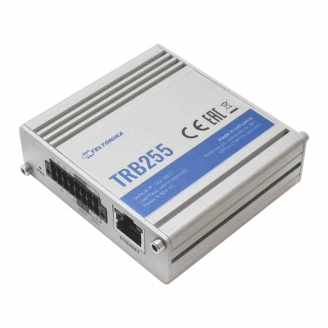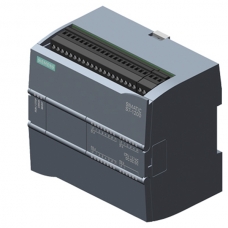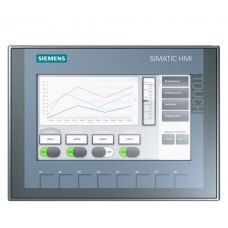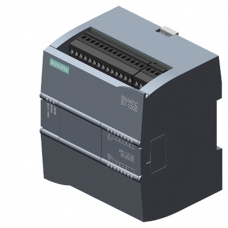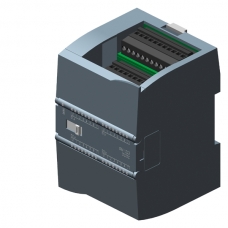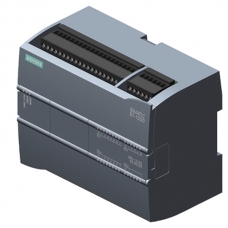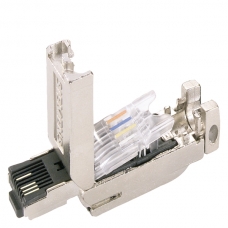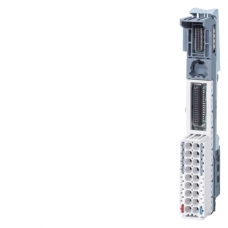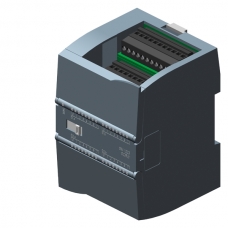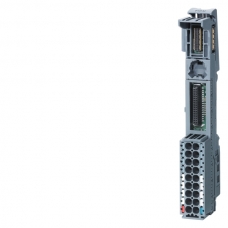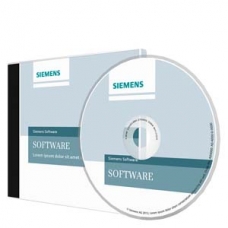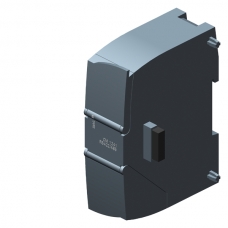Teltonika TRB255 to wysoce niezawodny i bezpieczny router LTE z szeregiem portów wejścia/wyjścia, moduł GNSS i porty szeregowe RS232/RS485, port Ethernet oraz modem LPWAN do profesjonalnych zastosowań. Ta brama sieciowa zapewnia wysoką wydajność, krytyczną dla misji komunikację komórkową oraz możliwości lokalizacji GPS. TRB255 wyposażony jest w redundancję łączności dzięki przełączaniu awaryjnemu na dwie karty SIM. Złącza anten zewnętrznych umożliwiają podłączenie pożądanych anten i łatwe znalezienie najlepszej lokalizacji sygnału.
Dzięki wstecznej kompatybilności z siecią EGPRS (2G), starsze urządzenia przemysłowe można aktualizować w celu przedłużonego użytkowania, a obsługa LTE Cat M1 i NB -IoT zapewnia długi cykl życia. Liczba wszystkich funkcji sprawia, że brama przemysłowa jest idealnyaw aplikacjach, w których starsze i nowoczesne urządzenia przemysłowe muszą być zintegrowane w jednym systemie.
Najważniejsze cechy:
Najważniejsze cechy:
- Procesor Qualcomm QCA9531, MIPS 24kc, 650 MHz i 64 MB pamięci RAM
- Komunikacja LTE Cat M1 / NB-IoT / EGPRS
- Konfigurowalne wejścia / wyjścia do zdalnego monitorowania i sterowania
- Pozycjonowanie GNSS z funkcją geofencing
- Interfejsy komunikacji szeregowej RS232 / RS485
- Kompatybilny z systemem zdalnego zarządzania Teltonika RMS
- Dual SIM zapewnia łączność z Internetem, jeśli sieć jednego operatora przestanie działać
- Oparty na systemie operacyjnym Linux pozwalającym na dużą personalizację oprogramowania
| MOBILE | |
| Mobile module | LTE (Cat M1) / NB-IoT / EGPRS |
| SIM switch | 2 SIM cards, auto-switch cases: weak signal, data limit, SMS limit, on roaming, no network, network denied, data connection fail |
| Status | Signal strength, Connected band, SINR, RSRP, RSRQ, Bytes sent/received |
| Bridge | Direct connection (bridge) between mobile ISP and device on LAN |
| SMS | SMS status, SMS configuration, send/read SMS via HTTP POST/GET, EMAIL to SMS (planned), SMS to EMAIL (planned), SMS to HTTP (planned), SMS to SMS (planned), scheduled SMS (planned), SMS autoreply (planned) |
| Black/White list (planned) | Operator black/white list |
| Multiple PDN (planned) | Possibility to use different PDNs for multiple network access and services |
| Band management | Used band status display, Band lock (planned) |
| APN | Auto APN |
| ETHERNET | |
| LAN | 1 x LAN port 10/100 Mbps, comply IEEE 802.3, IEEE 802.3u standards, supports auto MDI/MDIX |
| NETWORK | |
| Routing | Static routing, Dynamic routing (BGP, OSPF v2, RIP v1/v2) (planned) |
| Network protocols | TCP, UDP, IPv4, IPv6, ICMP, NTP, DNS, HTTP, HTTPS, FTP, SMTP, SSL v3, TLS, ARP, PPP (planned), UPNP (planned), SSH, DHCP, Telnet, MQTT (planned), Wake On Lan (WOL) (planned) |
| VoIP passthrough support (planned) | H.323 and SIP-alg protocol NAT helpers, allowing proper routing of VoIP packets |
| Connection monitoring | Ping Reboot, Periodic Reboot, LCP and ICMP for link inspection |
| Firewall | Port forward, traffic rules, custom rules |
| DHCP | Static and dynamic IP allocation, DHCP Relay |
| QoS (planned) | Traffic priority queuing by source/destination, service, protocol or port, WMM, 802.11e |
| DDNS (planned) | Supported >25 service providers, others can be configured manually |
| SSHFS (planned) | Possibility to mount remote file system via SSH protocol |
| SECURITY | |
| Authentication | Pre-shared key, digital certificates, X.509 certificates |
| Firewall | Pre-configured firewall rules can be enabled via WebUI, unlimited firewall configuration via CLI; DMZ; NAT; NAT-T |
| Attack prevention (planned) | DDOS prevention (SYN flood protection, SSH attack prevention, HTTP/HTTPS attack prevention), port scan prevention (SYN-FIN, SYN-RST, X-mas, NULL flags, FIN scan attacks) |
| VLAN (planned) | Tag based VLAN separation |
| Mobile quota control | Custom data limits for both SIM cards |
| WEB filter (planned) | Blacklist for blocking out unwanted websites, Whitelist for specifying allowed sites only |
| Access control | Flexible access control of TCP, UDP, ICMP packets, MAC address filter |
| VPN | |
| OpenVPN | Multiple clients and server can be running simultaneously, 12 encryption methods |
| OpenVPN Encryption | DES-CBC, RC2-CBC, DES-EDE-CBC, DES-EDE3-CBC, DESX-CBC, BF-CBC, RC2-40-CBC, CAST5-CBC, RC2-64-CBC, AES-128-CBC, AES-192-CBC, AES-256-CBC |
| IPSec | IKEv1, IKEv2, with 5 encryption methods (DES, 3DES, AES128, AES192, AES256) |
| PPTP, L2TP | Client/Server services can run simultaneously |
| DMVPN (planned) | Method of building scalable IPsec VPNs |
| GRE (planned) | GRE tunnel |
| SERIAL COMMMUNICATION MODES | |
| Modes | Console, OverIP, Modem (planned), Modbus RTU master, Modbus gateway, NTRIP client (planned) |
| MODBUS | |
| MODBUS TCP SLAVE | |
| ID filtering | Respond to one ID in range [1;255] or any |
| Allow remote access | Allow access through WAN |
| Custom registers | Modbus TCP custom register block, which allows to read/write to a file inside the router, and can be used to extend Modbus TCP slave functionality |
| MODBUS TCP MASTER | |
| Supported functions | 01, 02, 03, 04, 05, 06, 15, 16 |
| Supported data formats | 8 bit: INT, UINT; 16 bit: INT, UINT (MSB or LSB first); 32 bit: float, INT, UINT (ABCD (big-endian), DCBA (little-endian), CDAB, BADC) |
| MODBUS RTU MASTER | |
| Supported baud rates | From 300 to 3000000 |
| Supported functions | 01, 02, 03, 04, 05, 06, 15, 16 |
| Supported data formats | 8 bit: INT, UINT; 16 bit: INT, UINT (MSB or LSB first); 32 bit: float, INT, UINT (ABCD (big-endian), DCBA (little-endian), CDAB, BADC) |
| Number of data bits | 7 or 8 |
| Number of stop bits | 1 or 2 |
| Parity bits | None, Even, Odd |
| Flow control | None, RTS/CTS (only for RS232 interface), Xon/Xoff |
| MQTT GATEWAY | |
| Gateway | Allows sending commands and receiving data from Modbus Master trough MQTT broker |
| MODBUS DATA TO SERVER | |
| Protocols | HTTP(S), MQTT, Azure MQTT (planned) |
| MONITORING & MANAGEMENT | |
| WEB UI | HTTP/HTTPS, status, configuration, FW update, CLI, troubleshoot, event log, system log, kernel log |
| FOTA | Firmware update from server, automatic notification |
| SSH | SSH (v1, v2) |
| SMS | SMS status, SMS configuration, send/read SMS via HTTP POST/GET |
| Call (planned) | Reboot, Status, WiFi on/off, Mobile data on/off, Output on/off, answer/hang-up with a timer |
| TR-069 (planned) | OpenACS, EasyCwmp, ACSLite, tGem, LibreACS, GenieACS, FreeACS, LibCWMP, Friendly tech, AVSystem |
| MQTT (planned) | MQTT Broker, MQTT publisher |
| SNMP (planned) | SNMP (v1, v2, v3), SNMP Trap |
| JSON-RPC | Management API over HTTP/HTTPS |
| Modbus | Modbus TCP status/control |
| RMS | Teltonika Remote Management Systems (RMS) |
| IoT PLATFORMS | |
| Cloud of Things (planned) | Allows monitoring of: Device data, Mobile data, Network info, Availability |
| ThingWorx (planned) | Allows monitoring of: WAN Type, WAN IP Mobile Operator Name, Mobile Signal Strength, Mobile Network Type |
| Cumulocity (planned) | Allows monitoring of: Device Model, Revision and Serial Number, Mobile Cell ID, ICCID, IMEI, Connection Type, Operator, Signal Strength, WAN Type and IP |
| Azure IoT Hub (planned) | Can send device IP, Number of bytes send/received/ 3G connection state, Network link state, IMEI, ICCID, Model, Manufacturer, Serial, Revision, IMSI, Sim State, PIN state, GSM signal, WCDMA RSCP, WCDMA EC/IO, LTE RSRP, LTE SINR, LTE RSRQ, CELL ID, Operator, Operator number, Connection type, Temperature, PIN count to Azure IoT Hub server |
| SYSTEM CHARACTERISTICS | |
| CPU | Qualcomm QCA9531, MIPS 24kc, 650 MHz |
| RAM | 64 MB, DDR2 |
| Flash memory | 16MB SPI Flash (4 MB available for user) |
| FIRMWARE / CONFIGURATION | |
| WEB UI | Update FW from file, check FW on server, configuration profiles, configuration backup, restore point |
| FOTA | Update FW/configuration from server |
| RMS | Update FW/configuration for multiple devices |
| Keep settings | Update FW without losing current configuration |
| FIRMWARE CUSTOMIZATION | |
| Operating system | RutOS (OpenWrt based Linux OS) |
| Supported languages | Busybox shell, Lua, C, C++ |
| Development tools | SDK package with build environment provided |
| LOCATION TRACKING | |
| GNSS | GPS, GLONASS, BeiDou, Galileo and QZSS |
| Coordinates (planned) | GNSS coordinates via WebUI, SMS, TAVL, RMS |
| NMEA | NMEA 0183 |
| NTRIP (planned) | NTRIP protocol (Networked Transport of RTCM via Internet Protocol) |
| Server software (planned) | Supported server software TAVL, RMS |
| Mobile Network Geolocating | Location without using GPS, get approximate location based on mobile tower on RMS |
| Geofencing (planned) | Configurable multiple geofence zones |
| INPUT/OUTPUT | |
| Configurable I/O | 3 x Configurable Inputs/Outputs. Digital input 0 - 6 V detected as logic low, 8 - 30 V detected as logic high. Open collector output, max output 30 V, 300 mA |
| Analog input | 1 x Analog input (0 - 30 V) |
| Events (planned) | SMS, Email |
| Output control | HTTP POST/GET, Schedule |
| I/O juggler (planned) | Allows to set certain I/O conditions to initiate event |
| SERIAL | |
| RS232 | Terminal block connector: TX, RX, RTS, CTS |
| RS485 | Terminal block connector: D+, D-, R+, R- (2 or 4 wire interface) |
| Supported baud rates | From 300 to 3000000 |
| Number of data bits | 7 or 8 |
| Number of stop bits | 1 or 2 |
| Parity | None, Even, Odd |
| Flow control | None, RTS/CTS (only for RS232 interface), Xon/Xoff |
| POWER | |
| Connector | 2 pins in 16 pin industrial terminal block |
| Input voltage range | 9 – 30 VDC, reverse polarity protection, surge protection +/-1 kV 50 µs max |
| Power consumption | TBA |
| PHYSICAL INTERFACES (PORTS, LEDS, ANTENNAS, BUTTON, SIM) | |
| Ethernet | 1 x RJ45 port, 10/100 Mbps |
| I/O’s | 3 x Configurable I/O, 1 x Analog input in 16 pin terminal block |
| Status LEDs | 3 x connection status LEDs, 3 x connection strength LEDs, 1 x power LED, 1 x Eth port status LED |
| SIM | 2 x SIM slots (Mini SIM – 2FF), 1.8 V/3 V, double stacked SIM tray |
| Power | 2 pins in 16 pin terminal block |
| Antennas | 1 x SMA connector for Mobile, 1 x SMA connector for GNSS |
| RS232 | 4 pins in 16 pin terminal block (TX, RX, RTS, CTS) |
| RS485 | 4 pins in 16 pin terminal block (D+, D-, R+, R-) |
| Reset | Reboot, restore to user default (planned), restore to factory defaults |
| PHYSICAL SPECIFICATION | |
| Casing material | Aluminium housing with DIN rail mounting option |
| Dimensions | 83 x 25 x 74 mm |
| Weight | 165 g |
| Mounting options | DIN rail, wall mounting (additional kits needed), flat surface placement |
| OPERATING ENVIRONMENT | |
| Operating temperature | -40 ℃ to 75 ℃ |
| Operating humidity | 10% to 90% non-condensing |
Wszystkich opini ( 0 )
Możesz być rownież zainteresowany jednym z poniższych produktów

